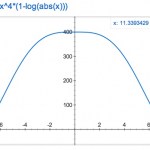cosmic
"Despite its name, the big bang theory is not really a theory of a bang at all. It is really only a theory of the aftermath of a bang." -Alan Guth
So you finally understand it. The Big Bang tells us that the Universe was hotter, denser, and expanding at a faster rate in the past.
Image credit: original source unknown.
The farther back we go, the closer together everything was, the higher in temperature (and shorter in wavelength) all the radiation was, and -- of course -- the younger the Universe was.
Image credit: Ned Wright (possibly Will Kinney, too), via http://ned.ipac.caltech.edu…
"Orbiting Earth in spaceship, I saw how beautiful our planet is. People, let us preserve and increase beauty, not destroy it!" -Yuri Gagarin
Fifty-two years ago today, the first human being left Earth, and we began our journey into outer space. But back in 1961, we didn't really know how far outer space stretched, or where all the matter and energy in the Universe came from.
Image credit: NASA, 1962.
That all changed with the discovery of the Cosmic Microwave Background (by Penzias and Wilson, with the Horn Antenna, above), and subsequent measurements that led us to the Big Bang picture of…
“The aim of science is not to open the door to infinite wisdom, but to set a limit to infinite error.” -Bertolt Brecht
One of the most frequent questions I get about the Universe -- as a cosmologist -- isn't quite about the Big Bang in and of itself.
The expansion of the Universe in reverse; image source unknown.
The Big Bang is a remarkable idea, of course, that says that, based on the observations that the Universe is expanding and cooling today, it was hotter, denser, and physically smaller in the past. This gets particularly exciting when we extrapolate very far back in the history of…
"Life exists in the universe only because the carbon atom possesses certain exceptional properties." -James Jeans
Here on Earth, every living thing is based around four fundamental, elemental building blocks of life: hydrogen, oxygen, nitrogen and, perhaps most importantly, carbon.
Image Credit: Robert Johnson / University of Pennsylvania.
From diamonds to nanotubes to DNA, carbon is indispensable for constructing practically all of the most intricate structures we know of. Most of the carbon in our world comes from long-dead stars, in the form of Carbon-12: carbon atoms containing six…
Some of you who've been following astronomy for awhile might remember this report, where a group of astronomers reported finding a giant "void" in the Universe.
What is a void? Well, galaxies are distributed pretty randomly, but because of gravity, they cluster together. A small example is our local group which looks like this,
and a larger example is the Virgo cluster, which is about 1,000 times as massive as our local group, and looks like this:
Well, a void is the opposite of a cluster, where you have a large volume of space that's simply empty of galaxies and matter. This press release…
When I think of molecules, I think of Conan O'Brien doing his skit where he plays Moleculo...
the molecular man! I don't think of astronomy, and I certainly don't think of the leftover radiation from the big bang (known as the cosmic microwave background)! But somebody over at the European Southern Observatory put these two together and made an incredibly tasty science sandwich.
See, we can measure the cosmic microwave background today, because we have photons (particles of light) coming at us in all directions at all locations, with a temperature of 2.725 Kelvin. Theoretical cosmology…
So as a full member of both the American Astronomical Society and the American Physical Society, I get sent issues of the magazine Physics Today. Well, I was going through the April issue, when I saw this article:
Cosmic Sound Waves Rule
by Daniel J. Eisenstein and Charles L. Bennett
That first name sounds familiar. Why? Because he's my boss! The article requires a subscription, but seeing as how this is what my research is, why don't I tell you what the big idea is.
The Universe is full of dark matter, normal matter, and radiation. When it's young, the radiation is more important than matter…
Since the dawn of time man has yearned to destroy the sun. - C. M. Burns
There's no need to stop at the Sun, though. Since yesterday was Earth day, I thought it was only appropriate to spend today telling you how not only to destroy the Earth, but to effectively destroy the entire Universe. To tell you this story, we have to go all the way back to the beginning, to just before the big bang.
The big bang was when the Universe was hot, dense, full of energy, and expanding very quickly. The Universe was also spatially flat and the same temperature everywhere, and full of both matter and…
The cosmic microwave background is the radiation left over from the big bang. It's very uniform, 2.725 Kelvin everywhere. We're moving with respect to it, so there's a doppler shift, and we see that as a dipole moment in the Temperature. When we subtract that out, we see variations on the order of 30 microKelvins! WMAP is a satellite (Wilkinson Microwave Anisotropy Probe) that measured these anisotropies, and they just released its year 5 data. First off, with the uniform and dipole parts subtracted out, and with the foreground from the galaxy also taken out, here's the map of the microwave…








